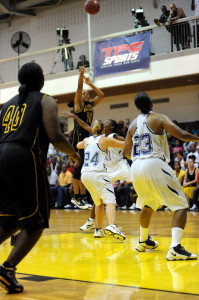Warning Signs to look for about Team Offense
A productive Team Offense is one-half of any successful strategy. The more a coach can be at ease with the strengths and weaknesses of a Team’s Offense, the sooner a coach can come to terms with what is required to be done in reaching the next level for the team’s development.

In training sessions, a coach must be always vigilant in assessing what is happening and how the progressing is going in regards to team offense. Some of the symptoms that need to be looked for by a coach include:
Players not knowing all the required team offences; players are not able to initiate the performance of the required range of offences
Poor execution of team offences; offences are initiated, but not executed to the required standard
One dimensional scoring; individual players within the team offense are not able to recognise the variations and secondary movements within an offense which lead to additional scoring opportunities
Phases of play Missing; teams during offense are not able to utilise each of the different phases prior to moving to the next. For example, a team when on offense might run a half court play, but will never use a fast break, primary transition, or secondary transition before reaching that half-court offense phase
All or some of these characteristics can be present within training sessions, which should act as a warning sign to coaches about their teams possible future performances. The reasons for these symptoms occurring will be varied depending on the individuals and team in general. It is best to consult with coaching staff as well as trusted advisors about what the causes could be and how to best move forward in dealing with these issues.
In game situations, the warning signs can be slightly different regarding team offense. In the game, the following traits should be looked for:
Limited range of plays within the team’s offense suite; during high stress situations most players will look to utilise those offenses they are comfortable with. A worrying sign might be if a team has an offensive playbook of team plays but only uses three of these within the course of a game
Catching out of offensive position; in the half court especially a player who is struggling to meet the demands of the competition will look to lift away from defensive pressure areas such as on the three-point line. Players will therefore catch the ball out of a possible scoring position by moving the relative easy catching position away from the defence
Increased turnover rate; if a team is not comfortable with the offensive sets then as a result, judgement surrounding passing and scoring opportunities may be affected. This can result in an increased rate of turnovers during the game
Unable to target specific players; if a team does not understand how to use the range of team offences fully then when individual players need to have the ball they might not be able execute the desired play. An example of this might be if a player is having a particularly good offensive night, if the team cannot find the player within the offence with the “hot hand” then the potential good night could be missed
Lack of consecutive scoring runs; when a team is not comfortable with the range of offensive plays, they might not be able to make adjustments quickly or counter defensive tactics. This will result in an up and down scoring pattern. Meaning back-to-back scoring possessions become irregular when looking at the breakdown of a game’s overall possessions
Again, due to the wide range of variables that happen during the course of a game the best strategy when examining a team offense is to draw upon trusted knowledgeable opinions, statistical information and video footage to identify the causes of the problems experienced. By always being vigilant, the severity of the issues related to a team offense can be reduced and rectified before having a significant adverse effect on a team’s season.






